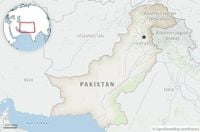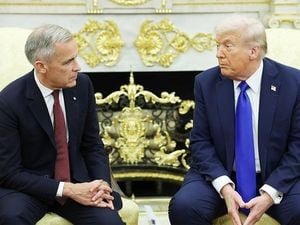Before dawn broke over the rugged hills of Pakistan’s Orakzai district this week, the country’s security forces launched a high-stakes operation targeting a suspected hideout of the Tehrik-e-Taliban Pakistan (TTP), a militant group that has haunted the region for years. The ensuing gunbattle, fierce and unyielding, left 11 Pakistani soldiers dead—including two highly regarded officers—and claimed the lives of 19 TTP fighters, according to statements from the Pakistani military and reporting by the Associated Press.
The operation, which unfolded on Tuesday, October 7, and continued into the early hours of Wednesday, October 8, underscores the persistent and deadly threat posed by armed groups in Pakistan’s northwestern territories. The military identified the fallen officers as Lieutenant Colonel Junaid Arif and Major Tayyab Rahat, both of whom, as the military put it, “fought gallantly and embraced martyrdom.” Prime Minister Shehbaz Sharif, in a statement carried by AP, praised the security forces for their bravery and paid tribute to the soldiers who lost their lives in what he described as a critical battle against militancy.
But the cost was steep. The TTP, which quickly claimed responsibility for the attack, has been a thorn in Pakistan’s side for years, and its resurgence since 2021 has alarmed both local communities and national leaders. The group, separate from but closely allied with the Afghan Taliban, has been emboldened since the latter’s return to power in Kabul. Many TTP leaders and fighters are believed to be operating from sanctuaries just across the border in Afghanistan, a claim that has fueled diplomatic tensions between Islamabad and Kabul.
Pakistan’s military described the slain insurgents as “Khwarij,” a term used by officials to refer to militants they allege are backed by foreign actors, notably India. The banned Tehrik-e-Taliban Pakistan and the Baloch Liberation Army (BLA) were specifically named in the military’s statement, echoing longstanding accusations from Pakistani authorities that New Delhi supports separatists in Balochistan and Pakistani Taliban fighters—a charge India has consistently denied, according to AP.
As the dust settled in Orakzai, the broader picture across Pakistan’s northwest remained grim. According to the Centre for Research and Security Studies (CRSS), the country has witnessed a dramatic escalation in violence toward the end of 2025. The numbers are stark: a 46% increase in violence compared to the previous quarter, with 901 fatalities and 599 injuries recorded across 329 incidents. The provinces of Khyber Pakhtunkhwa and Balochistan, which border Afghanistan, accounted for an overwhelming 96% of these deaths. Khyber Pakhtunkhwa alone saw 638 deaths across 221 incidents, making it the hardest-hit region by far.
In Balochistan, the violence takes on a different hue. Separatist groups like the BLA continue to target security forces and critical infrastructure, demanding greater autonomy and accusing the central government of exploiting the province’s rich natural resources without fair compensation. The BLA’s attacks, while distinct from the religiously motivated violence of the TTP, add a layer of complexity to Pakistan’s security challenges, making it clear that the threats are both ideological and political in nature.
For Pakistan, these mounting attacks have created a sense of siege, particularly in the northwest. The government has responded with a series of ongoing military operations in volatile regions such as Bajaur and Orakzai, aiming to dismantle militant networks before they can regroup or plan further assaults. Yet, as the events of this week demonstrate, the militants remain both resilient and deadly.
Diplomatically, the violence has strained Pakistan’s already tense relationship with the Islamic Emirate of Afghanistan. Islamabad has repeatedly accused the Taliban government in Kabul of turning a blind eye to TTP militants operating from Afghan soil. Afghan Foreign Minister Amir Khan Muttaqi, however, has categorically denied these allegations, insisting that “no terrorist groups are operating from Afghan territory” and emphasizing the Taliban’s commitment to not allowing their country to be used for attacks against neighbors. Afghanistan, for its part, has called for pragmatic cooperation with Pakistan and other regional actors to address shared security concerns.
The Pakistani military’s use of the term “Khwarij” to describe the slain militants is loaded with historical and ideological significance. It’s a label that casts the militants as heretics and outcasts, a rhetorical move that seeks to delegitimize their actions in the eyes of the public. Yet, the persistence of these groups—and the fact that they continue to attract recruits and resources—suggests that the root causes of militancy in Pakistan remain unaddressed.
According to the AP, the Pakistani Taliban’s claim of responsibility for the Orakzai attack fits a broader pattern of emboldened activity since the Afghan Taliban’s resurgence. The porous border between Pakistan and Afghanistan has long been a source of frustration for Islamabad, which views cross-border sanctuaries as a key enabler of militant violence. The Pakistani government has called for greater regional cooperation to counter terrorism and dismantle all terrorist groups operating from Afghan soil, but so far, those calls have produced little in the way of concrete results.
Meanwhile, the human cost of the violence continues to mount. The deaths of Lieutenant Colonel Arif and Major Rahat, along with their fellow soldiers, have been met with public mourning and official commendation. Their sacrifice, the government insists, will not be in vain. Yet, for many in Khyber Pakhtunkhwa and Balochistan, the cycle of violence feels never-ending, with each new attack serving as a grim reminder of the challenges that lie ahead.
As 2025 draws to a close, Pakistan finds itself at a crossroads. The surge in militant attacks, the complex interplay of regional politics, and the enduring grievances of marginalized provinces all point to a security landscape that is both volatile and uncertain. The government’s resolve to confront these threats remains strong, but the path to lasting peace is anything but straightforward. For now, the people of Pakistan—especially those living in the shadow of the northwest’s mountains—can only hope that the sacrifices of their soldiers will one day yield a safer, more stable future.




